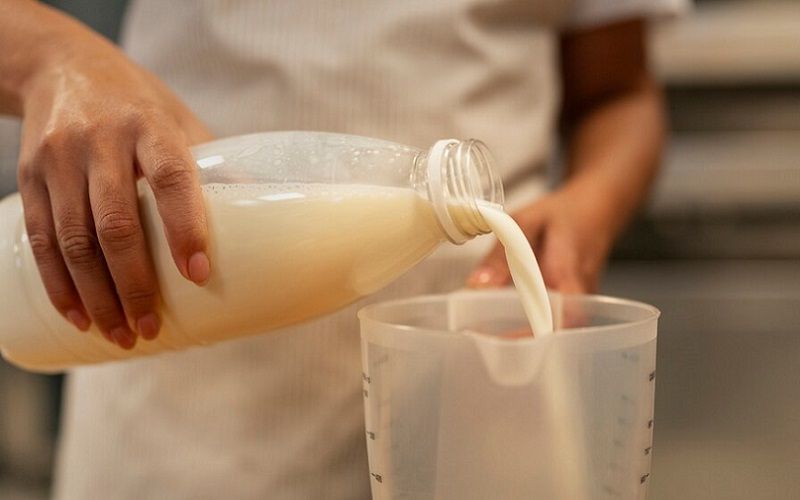Embracing the Clean Label Movement: How Food Manufacturers Can Adapt
Sourse: The DairyNews
In an era where consumers prioritize transparency and simplicity, the clean label movement is revolutionizing the food and beverage industry.

This shift away fr om complex ingredient lists and synthetic additives toward more natural and straightforward products is reshaping how manufacturers approach product development.
The clean label movement isn't just a fleeting trend; it's a profound shift towards greater transparency in the food industry. Consumers are increasingly demanding products that are not only easy to understand but also made fr om wholesome, minimally processed ingredients. This demand for transparency is driving manufacturers to simplify their ingredient lists and eliminate artificial additives, enabling consumers to make more informed choices about their food.
Innovations in Ingredients
Addressing this trend, companies like Ingredion are leading the way with innovations tailored to the clean label demand. For instance, Ingredion's introduction of Novation Indulge 2940, a non-GMO functional native corn starch, allows manufacturers to achieve desired textures in dairy and alternative dairy products without compromising on the clean label standards. This starch is particularly effective in applications like plant-based cheese and cream cheese, wh ere achieving the right texture is crucial for consumer acceptance.
The Role of Functional Proteins
Arla Foods Ingredients is another key player making strides with its Nutrilac functional milk protein solutions, which enhance the sensory qualities of dairy products. By using these proteins, manufacturers can avoid other texture-enhancing additives, making products simpler and more natural without sacrificing quality. These proteins are particularly useful in controlling viscosity and improving the texture and stability of high-protein dairy items.
The Importance of Starches
Similarly, Tate & Lyle's Claria line of clean label starches demonstrates how traditional ingredients can be adapted to meet modern standards. These starches perform similarly to modified starches but are labeled simply as 'starch', aligning with clean label criteria. They are crucial in various applications, including beverages and dairy products, wh ere they improve texture and stability.
Enzymatic Solutions and Egg Alternatives
In the bakery sector, innovations like Novamyl BestBite from Novonesis offer manufacturers ways to extend the freshness and texture of baked goods without relying on artificial preservatives. Meanwhile, Ulrick & Short’s Ovaprox provides an alternative for egg reduction, helping bakers manage costs and simplify ingredient lists while still delivering high-quality products.
While the movement presents numerous opportunities for innovation, it also poses challenges, particularly in balancing product functionality with consumer expectations for natural ingredients. As the market continues to evolve, manufacturers must stay agile, continuously adapting their offerings to align with consumer preferences for transparency and simplicity.
The clean label movement isn't just a fleeting trend; it's a profound shift towards greater transparency in the food industry. Consumers are increasingly demanding products that are not only easy to understand but also made fr om wholesome, minimally processed ingredients. This demand for transparency is driving manufacturers to simplify their ingredient lists and eliminate artificial additives, enabling consumers to make more informed choices about their food.
Innovations in Ingredients
Addressing this trend, companies like Ingredion are leading the way with innovations tailored to the clean label demand. For instance, Ingredion's introduction of Novation Indulge 2940, a non-GMO functional native corn starch, allows manufacturers to achieve desired textures in dairy and alternative dairy products without compromising on the clean label standards. This starch is particularly effective in applications like plant-based cheese and cream cheese, wh ere achieving the right texture is crucial for consumer acceptance.
The Role of Functional Proteins
Arla Foods Ingredients is another key player making strides with its Nutrilac functional milk protein solutions, which enhance the sensory qualities of dairy products. By using these proteins, manufacturers can avoid other texture-enhancing additives, making products simpler and more natural without sacrificing quality. These proteins are particularly useful in controlling viscosity and improving the texture and stability of high-protein dairy items.
The Importance of Starches
Similarly, Tate & Lyle's Claria line of clean label starches demonstrates how traditional ingredients can be adapted to meet modern standards. These starches perform similarly to modified starches but are labeled simply as 'starch', aligning with clean label criteria. They are crucial in various applications, including beverages and dairy products, wh ere they improve texture and stability.
Enzymatic Solutions and Egg Alternatives
In the bakery sector, innovations like Novamyl BestBite from Novonesis offer manufacturers ways to extend the freshness and texture of baked goods without relying on artificial preservatives. Meanwhile, Ulrick & Short’s Ovaprox provides an alternative for egg reduction, helping bakers manage costs and simplify ingredient lists while still delivering high-quality products.
While the movement presents numerous opportunities for innovation, it also poses challenges, particularly in balancing product functionality with consumer expectations for natural ingredients. As the market continues to evolve, manufacturers must stay agile, continuously adapting their offerings to align with consumer preferences for transparency and simplicity.
Key News of the Week











